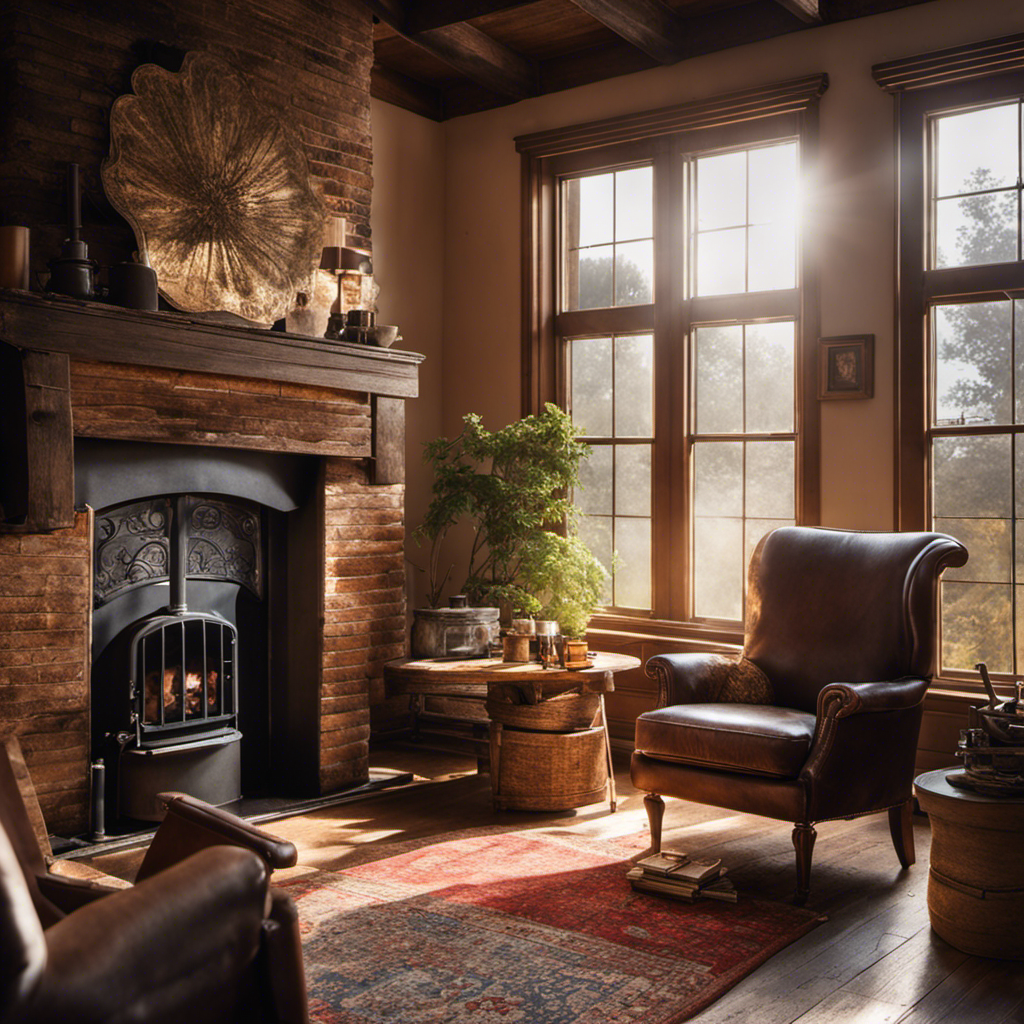As homeowners, it is essential to consider the functionality and efficiency of our household appliances. With a 25-year-old furnace, it may be time to evaluate whether a replacement is necessary.
This article will explore the signs of wear and tear, energy efficiency considerations, safety concerns, repair costs versus replacement costs, available rebates and incentives, and the long-term benefits of upgrading.
By making an informed decision, you can ensure a comfortable and cost-effective heating system for your home.
Key Takeaways
- Regular maintenance is crucial for optimal performance and longevity.
- Older furnaces pose safety concerns such as carbon monoxide leaks and fire hazards.
- Upgrading to a more energy-efficient furnace leads to significant energy savings and reduces greenhouse gas emissions.
- Considering repair costs, replacement costs, and available rebates and incentives is important when deciding whether to replace a 25-year-old furnace.
Signs of Wear and Tear
Over the course of its 25-year lifespan, a furnace may exhibit various signs of wear and tear. To ensure its optimal performance and longevity, regular maintenance is crucial. A maintenance checklist can help homeowners identify potential issues and address them promptly.
However, there are instances when a professional inspection becomes necessary. A professional inspection can provide a more comprehensive assessment of the furnace’s condition, especially for older units. Expert technicians have the knowledge and expertise to identify hidden problems that may not be apparent during routine maintenance. They can check for signs of excessive rust, cracks in the heat exchanger, and any other issues that may compromise the furnace’s efficiency and safety.
Energy Efficiency Considerations
The energy efficiency of a furnace is an important factor to consider when deciding whether to replace a 25-year-old unit. Older furnaces tend to have lower efficiency ratings compared to newer models, which means they consume more energy to produce the same amount of heat.
By upgrading to a more energy-efficient furnace, homeowners can experience significant energy savings in the long run. Not only will this result in lower utility bills, but it will also have a positive environmental impact by reducing greenhouse gas emissions.
Newer furnaces are designed to meet higher energy efficiency standards, using advanced technologies and improved insulation to minimize heat loss. Considering the potential energy savings and positive environmental impact, replacing an old furnace with a more efficient model is a worthwhile investment for homeowners.
Safety Concerns
An important consideration when evaluating whether to replace a 25-year-old furnace is the safety concerns associated with older units.
One of the main safety concerns is the risk of carbon monoxide leaks. Older furnaces may develop cracks or leaks in their heat exchangers, which can allow carbon monoxide, a colorless and odorless gas, to escape into the home. Carbon monoxide is highly toxic and can cause serious health issues or even be fatal if inhaled in high concentrations.
Another safety concern is the increased risk of fire hazards. Over time, the components of an older furnace can deteriorate or become faulty, increasing the risk of electrical malfunctions or overheating, which can lead to fires.
To ensure the safety of your household, it is advisable to consider replacing your 25-year-old furnace with a newer and more reliable model.
Repair Costs Vs. Replacement Costs
One important consideration when evaluating whether to replace a 25-year-old furnace is the comparison of repair costs and replacement costs. While repairing a furnace may seem like the more cost-effective option in the short term, it is essential to consider the long-term implications.
Older furnaces tend to require frequent repairs, which can quickly add up over time. On the other hand, investing in a new furnace might have a higher upfront cost, but it can lead to significant savings in the long run.
Additionally, newer furnaces are more energy-efficient, resulting in lower utility bills and reducing the environmental impact.
Therefore, when making a decision about whether to repair or replace your 25-year-old furnace, it is crucial to consider the cost comparison and the environmental impact of each option.
Available Rebates and Incentives
When considering the replacement of a 25-year-old furnace, it is important to explore the available rebates and incentives that can help offset the cost.
Many government programs and initiatives offer financial incentives to encourage homeowners to upgrade their old, inefficient furnaces to more energy-efficient models. These incentives can come in the form of tax credits, rebates, or low-interest financing options.
Taking advantage of these programs not only helps reduce the financial burden of replacing your furnace but also has a positive environmental impact. By upgrading to a newer, energy-efficient furnace, you will be reducing your carbon footprint and decreasing your energy consumption.
This can lead to a more sustainable future and a healthier planet for future generations.
Long-Term Benefits of Upgrading
Why should homeowners consider the long-term benefits of upgrading their 25-year-old furnace? There are two main reasons: cost savings and environmental impact.
Upgrading to a new furnace can lead to significant cost savings in the long run. Newer furnaces are more energy-efficient, which means they consume less energy to heat your home. This translates to lower monthly utility bills and reduced overall expenses.
Additionally, upgrading to a newer furnace can also have a positive environmental impact. Older furnaces tend to emit more greenhouse gases and contribute to air pollution. By replacing your old furnace with a more efficient model, you can reduce your carbon footprint and help protect the environment for future generations.
Frequently Asked Questions
How Often Should I Have My Furnace Inspected and Maintained?
Furnace inspection frequency and the importance of furnace maintenance are crucial for ensuring the proper functioning and longevity of the unit. Regular inspections and maintenance should be done annually to prevent breakdowns and optimize efficiency.
Are There Any Alternative Heating Options to Consider Instead of Replacing My Furnace?
When considering alternative heating options, it is important to explore energy efficient alternatives that can potentially replace a 25-year-old furnace. These alternatives can provide better heating performance while reducing energy consumption and environmental impact.
What Are the Potential Health Risks Associated With an Old Furnace?
Old furnaces can pose potential health risks, including respiratory problems and carbon monoxide poisoning. These risks can be mitigated by regular maintenance and inspections. It is important to prioritize the safety and well-being of occupants.
Can I Install a New Furnace Myself or Should I Hire a Professional?
When considering installing a new furnace, it is important to weigh the pros and cons of DIY versus hiring a professional. While DIY may save money, hiring a professional ensures proper installation and reduces the risk of potential safety hazards.
What Are the Environmental Impacts of Keeping an Old Furnace Versus Replacing It With a Newer, More Efficient Model?
Keeping an old furnace can have negative environmental impacts due to its lower energy efficiency. However, replacing it with a newer, more efficient model can reduce carbon emissions and energy consumption, contributing to a greener and more sustainable future.


